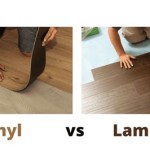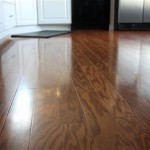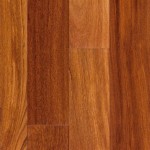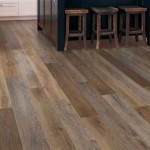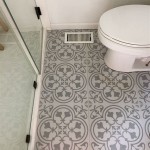What to Use to Remove Paint Off Wood Floors
Removing paint from wood floors can be a challenging task, as the type of paint, the age of the paint, and the type of wood all influence the best removal method. Choosing the appropriate tools and techniques is crucial to avoid damaging the underlying wood. This article details several effective methods and products suitable for removing paint from wood floors, emphasizing safety and the preservation of the floor's integrity.
Understanding the Type of Paint and Wood
Before embarking on any paint removal project, it's essential to identify the type of paint that needs to be removed. Common types of paint found on wood floors include latex-based paint, oil-based paint, and occasionally older paints that may contain lead. Latex paint is generally easier to remove than oil-based paint due to its water-based composition. Oil-based paints, on the other hand, create a tougher, more durable bond with the wood surface, requiring more aggressive removal techniques. Identifying the paint type can often be achieved through simple tests. For example, rubbing a small, inconspicuous area with denatured alcohol can help determine if the paint is latex-based. Latex paint will often soften or come off with alcohol, whereas oil-based paint will remain largely unaffected.
The type of wood flooring is equally important. Hardwoods, such as oak, maple, and hickory, are more durable and can withstand more aggressive paint removal methods than softer woods, such as pine or fir. Older wood floors may be more delicate due to age and wear, requiring gentler approaches. Understanding the wood species and its condition will help in selecting the appropriate paint removal strategy.
If there's a suspicion that the paint may contain lead, especially in older homes built before 1978, it's critical to take appropriate safety precautions. Lead paint is a serious health hazard, and its removal should be handled with extreme care. Testing for lead can be done using a lead testing kit purchased from most hardware stores. If lead is present, professional abatement is highly recommended to ensure safety and compliance with local regulations.
Effective Paint Removal Methods
Several methods can be used to remove paint from wood floors, each with its advantages and disadvantages. The choice of method depends on the type of paint, the type of wood, the size of the area to be cleaned, and personal preference. These methods range from relatively gentle techniques like using heat to more aggressive options like chemical strippers.
Heat Guns
Using a heat gun is an effective method for softening paint, making it easier to scrape away. The heat gun works by applying controlled heat to the paint surface, causing it to soften and blister. This allows for the paint to be gently scraped off using a putty knife or paint scraper. Care must be taken not to overheat the paint, as this can cause it to burn, releasing potentially harmful fumes and making it more difficult to remove. It's also crucial to keep the heat gun moving to prevent scorching the wood. Always wear appropriate safety gear, including a respirator, to avoid inhaling fumes and eye protection to shield from flying debris.
When using a heat gun, hold it a few inches away from the surface and move it in a sweeping motion. Once the paint begins to soften, use a scraper to gently lift it away. Work in small sections and avoid applying excessive pressure, which can damage the wood. This method is particularly suitable for removing multiple layers of paint or for areas with intricate details.
Chemical Strippers
Chemical paint strippers are designed to dissolve paint, making it easier to remove. There are various types of chemical strippers available, including solvent-based strippers and more environmentally friendly, water-based options. Solvent-based strippers are typically more effective at removing stubborn paints, such as oil-based paints and varnishes, but they also tend to have stronger odors and require more stringent safety precautions. Water-based strippers are less toxic and have lower odor, but may require more applications to achieve the desired results.
When using chemical strippers, it's crucial to follow the manufacturer's instructions carefully. Apply the stripper evenly to the painted surface using a brush or roller. Allow the stripper to dwell for the recommended time, which is typically between 20 minutes and several hours, depending on the product and the paint thickness. As the stripper works, the paint will begin to blister and soften. Use a putty knife or scraper to remove the softened paint. Multiple applications may be necessary for thick or stubborn layers of paint.
Always work in a well-ventilated area and wear appropriate protective gear, including chemical-resistant gloves, eye protection, and a respirator. Dispose of used stripper and removed paint properly, following local regulations. After stripping, neutralize the surface according to the stripper's instructions. This often involves washing the surface with water or a specific neutralizing solution to remove any residual chemicals.
Sanding
Sanding is a mechanical method of removing paint that involves using abrasive materials to wear away the paint layer. Sanding can be effective for removing thin layers of paint or for smoothing surfaces after using other paint removal methods. However, it's essential to use the correct grit of sandpaper and sanding technique to avoid damaging the wood. Coarse-grit sandpaper is suitable for removing thick layers of paint, while finer-grit sandpaper is used for smoothing the surface.
When sanding wood floors, it's best to use a floor sander for larger areas. Smaller areas can be sanded by hand using a sanding block or orbital sander. Start with a coarser grit sandpaper, such as 60-grit or 80-grit, to remove the bulk of the paint. Gradually move to finer grits, such as 120-grit or 150-grit, to smooth the surface and remove any remaining paint residue. Always sand in the direction of the wood grain to avoid scratching the wood. Dust generated during sanding can be a health hazard, particularly if the paint contains lead. Wear a respirator to protect your lungs and use a vacuum with a HEPA filter to collect dust. Thoroughly clean the area after sanding to remove any remaining dust particles.
Keep in mind that sanding can remove the top layer of wood, potentially affecting the floor's color and texture. It might be necessary to refinish the entire floor after sanding to ensure a consistent appearance.
Other Methods
In addition to the methods described above, there are other less common but potentially effective approaches to removing paint from wood floors. These include using a steamer or a citrus-based paint remover. Steamers use hot steam to soften the paint, making it easier to scrape away. Citrus-based paint removers are environmentally friendly and can be effective for removing latex paint. However, they may require longer dwell times and multiple applications.
Safety Precautions and Considerations
Regardless of the method used, safety should always be the top priority when removing paint from wood floors. Proper ventilation is essential, especially when using chemical strippers or heat guns. Wear appropriate protective gear, including gloves, eye protection, and a respirator. If there is a possibility that the paint contains lead, take extra precautions to prevent the spread of lead dust. This includes wetting the area before sanding, using a vacuum with a HEPA filter, and properly disposing of waste materials.
Before starting any paint removal project, test the chosen method on a small, inconspicuous area to ensure that it does not damage the wood. This will help you determine the effectiveness of the method and identify any potential problems. Take your time and work carefully to avoid damaging the wood. If you are unsure about any aspect of the paint removal process, consult with a professional.
Consider the environmental impact of the chosen method. Opt for environmentally friendly products whenever possible and dispose of waste materials properly. By following these guidelines and taking the necessary precautions, you can effectively remove paint from wood floors and restore their natural beauty.

How To Remove Paint Off Hardwood Floors Safely

Don S Room Progress How To Remove Paint From Wood Floors At Home With Ashley

Easily Remove Paint From Your Floors

How To Remove Old Paint From A Wooden Floor Esb Flooring

Easiest Ways To Clean Paint Stains From Your Hardwood Floors

Don S Room Progress How To Remove Paint From Wood Floors At Home With Ashley

Tested 10 Easy Ways To Get Paint Off Hardwood Floors Torera George

How To Remove Paint From Hard Wood Floors

Life On Elizabeth How To Remove Paint Splatter From Wood Floors

Does Wd 40 Remove Paint From Hardwood Floors Mr Sander
See Also
